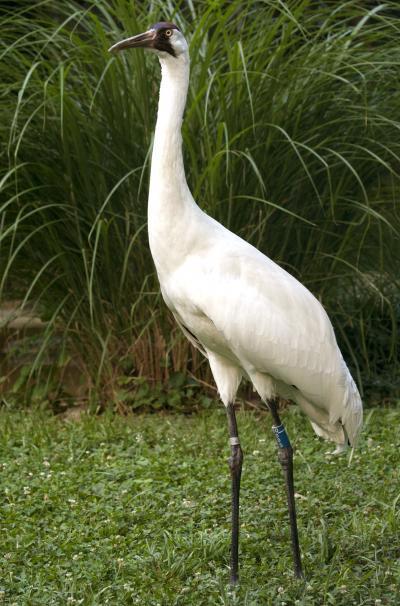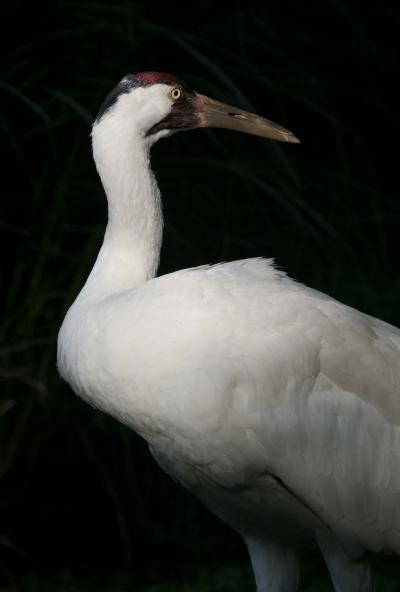
Majestic Whooping Crane Returns to National Zoo
After an 88-year-long hiatus North America's tallest bird, the statuesque whooping crane (Grus americana), is once again on exhibit at the Bird House at the Smithsonian's National Zoological Park.
An 11-year-old male whooping crane named Rocky left Homosassa Springs State Park in Florida and is now on exhibit in the nation's capital.
Whooping cranes are one of only two crane species native to the United States. There are only eight other zoos in the U.S. which exhibit these birds.
"It is an honor for the National Zoo to once again exhibit this magnificent species," said Dennis Kelly, director of the Smithsonian's National Zoological Park. "Although most people have heard of whooping cranes, very few have had the privilege of seeing one in person. We are thrilled to have Rocky here as an ambassador for his species."
Rocky is only the fourth whooping crane to call the National Zoo home. The Zoo's first crane, a wild-caught bird of unknown sex, arrived in 1897. Its last, a female, died in 1923.
The birds get their name from the loud "whoop" sound they make, though Rocky is strangely silent.
"We don't know why Rocky is mute," says Sara Hallager, a biologist at the Zoo's Bird House. "The reason behind his silence is a mystery known only to him."
Get the world’s most fascinating discoveries delivered straight to your inbox.
By 1938, hunting and agricultural expansion had drastically reduced wild whooping crane populations to an estimated 21 individuals. Zoos, research centers and nature preserves worked to preserve the species by matching individual bids that didn't have mates to keep numbers up and the population as genetically diverse as possible.
Today, U.S. whooping crane populations are managed by the U.S. Fish and Wildlife Service. According to the 2010 census, 407 whooping cranes reside in breeding centers and protected nature reserves in the eastern and mid-western United States and Canada, while another 167 individuals are in human care. These numbers mean that their population trends are increasing, an encouraging sign that the species will thrive.
"Their remarkable population recovery and subsequent reintroduction is one of the greatest conservation stories in North America," said Ed Bronikowski, senior curator at the National Zoo. "Thanks to the continuing efforts of many, this species is not going extinct anytime soon."
Despite this progress, whooping cranes are still considered endangered by the International Union for Conservation of Nature. In breeding centers and zoos, whooping cranes can live upwards of 40 years old. In protected nature reserves, however, a whooping crane's lifespan is limited to about 30 years. Collisions with fences and power lines, illegal hunting, predators, disease and polluted waterways threaten these cranes.
 Live Science Plus
Live Science Plus








